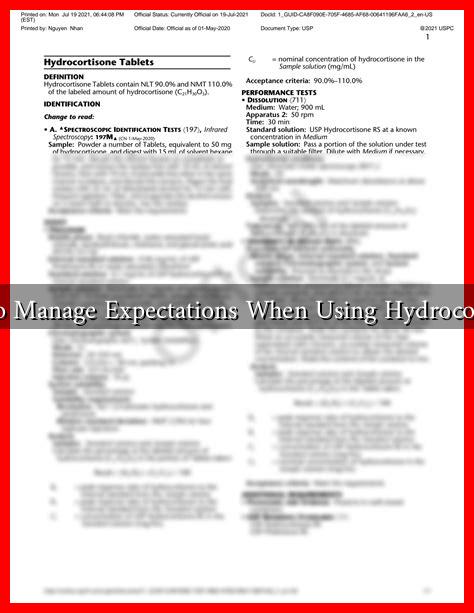-
Table of Contents
How to Manage Expectations When Using Hydrocortisone
Hydrocortisone is a widely used corticosteroid that helps reduce inflammation and alleviate symptoms associated with various skin conditions, allergies, and autoimmune disorders. While it can be highly effective, managing expectations when using hydrocortisone is crucial for achieving the best outcomes. This article will explore how to set realistic expectations, understand the medication’s effects, and navigate potential side effects.
Understanding Hydrocortisone
Hydrocortisone is a synthetic form of cortisol, a hormone produced by the adrenal glands. It is available in various forms, including creams, ointments, and oral tablets. The medication works by suppressing the immune response and reducing inflammation, making it effective for conditions such as:
- Psoriasis
- Eczema
- Allergic reactions
- Rheumatoid arthritis
- Inflammatory bowel disease
While hydrocortisone can provide significant relief, it is essential to have realistic expectations regarding its effectiveness and potential side effects.
Setting Realistic Expectations
When starting hydrocortisone treatment, patients often have high hopes for rapid improvement. However, it is important to understand that:
- Timeframe for Results: While some patients may notice improvement within a few days, others may take weeks to see significant changes. Patience is key.
- Individual Variability: Each person’s response to hydrocortisone can vary based on factors such as the severity of the condition, the area of application, and individual health factors.
- Complementary Treatments: Hydrocortisone is often most effective when used in conjunction with other treatments, such as moisturizers or systemic medications.
For example, a study published in the Journal of Dermatological Treatment found that patients with eczema who used hydrocortisone alongside emollients experienced better outcomes than those who used hydrocortisone alone.
Recognizing Potential Side Effects
While hydrocortisone is generally safe for short-term use, it can cause side effects, especially with prolonged use. Common side effects include:
- Skin thinning
- Stretch marks
- Acne or rosacea
- Increased hair growth
- Systemic effects (with oral use), such as weight gain and mood changes
Understanding these potential side effects can help patients manage their expectations and communicate effectively with their healthcare providers. For instance, a patient using hydrocortisone for an extended period may notice skin thinning, which can be alarming. However, knowing this is a possible side effect can help them approach their treatment with a more informed perspective.
Communicating with Healthcare Providers
Effective communication with healthcare providers is essential for managing expectations. Patients should:
- Discuss Goals: Clearly outline treatment goals and desired outcomes with their healthcare provider.
- Report Side Effects: Keep track of any side effects experienced and report them promptly.
- Ask Questions: Inquire about the expected duration of treatment and any alternative therapies that may be available.
By fostering open communication, patients can better navigate their treatment journey and adjust their expectations accordingly.
Conclusion
Managing expectations when using hydrocortisone is vital for achieving optimal results and maintaining a positive outlook during treatment. By understanding the medication’s effects, recognizing potential side effects, and communicating effectively with healthcare providers, patients can set realistic goals and enhance their treatment experience. Remember, while hydrocortisone can be a powerful tool in managing inflammation and symptoms, it is not a one-size-fits-all solution. Patience, education, and collaboration with healthcare professionals are key to successful treatment outcomes.


